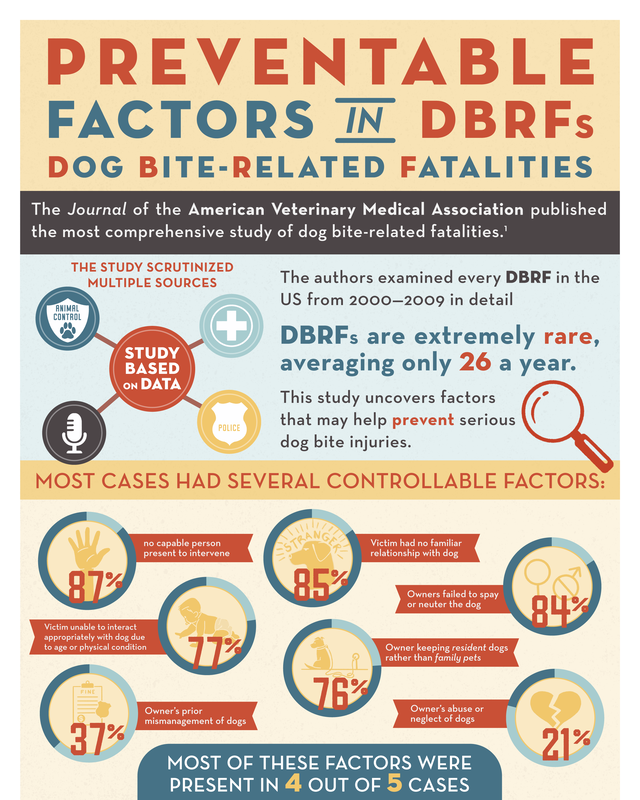|
Not a month goes by when I don't hear someone talking about or read something on social media supporting the concept of Mandatory Spay/Neuter as the solution to "pet overpopulation" related to the destruction of healthy and treatable animals in animal shelters. The argument is that if we just punish people for failing to have pets sterilized, it will serve as an incentive for them to comply. That approach always reminded of a phrase from my Army days that goes, "the beatings will continue until morale improves." I understand the allure of the "there ought to be a law approach." It would be wonderful if making a single law in a city, county or state would magically resolve numerous issues at one time. The problem is simple: Mandatory Spay/Neuter just does not work. Most states have laws which say that animals adopted from animal shelters and from rescue groups must be sterilized. Laws like this are vital. Those animals adopted out are the end of the line and will produce no offspring to add to local pet populations. On the flip side, it makes no sense at all to adopt out unsterilized animals who will then create offspring which may then end up in the shelter or with a rescue group, thereby creating a never-ending cycle of adoption, birth and destruction (in most shelters). That would be the animal shelter/rescue version of Sisyphus. To be clear, when people talk about Mandatory Spay/Neuter (often called MSN for short), they are not talking about laws related to shelter and rescue animals. They are talking about laws that require ALL animals in a given geographic area be spayed and neutered to include owned animals. (People often lament that animals are considered property under the law. When it comes to MSN, that is a good thing. People have a right to determine what happens to their own property, making room for an argument that MSN is actually unconstitutional). I learned last week that a person in my area had written an ordinance for the city in which I work to enact MSN. I presume that person was well-intentioned and just did not realize that what seems good on paper doesn't translate to practical application. In the process of researching the issues with MSN, it occurred to me I had not seen any recent blogs on the topic. This is why I wrote this blog. Much of the discussion is dated to a degree because this is actually a fairly well-settled issue in animal sheltering. The world is not flat, Elvis has left the building, we went to the moon and MSN does not work. I'm sharing my research here to make my argument in opposition to MSN, to help educate some folks along the way and to provide an example of what one community has done related to spay and neuter which makes MSN irrelevant. These Organizations Oppose Mandatory Spay Neuter The following organizations all oppose MSN. There are more, but I consider this my go-to list when I engage with people about this subject. Click on the name for each organization to learn more about opposition to MSN. American Veterinary Medical Association American College of Theriongenologsists Humane Society of the United States MSN Position Humane Society of the United States (regarding veterinary positions on spay/neuter generally) ASPCA Best Friends Animal Society No Kill Advocacy Center National Animal Interest Alliance No Kill Learning (explaining the difference between "pet overpopulation" and "shelter overpopulation) related to MSN I would be remiss if I did not mention an article written by Brent Toellner about MSN which I have shared too many times to count and shared as recently as last week. He wrote it as KC Dog Blog prior to being named the National Programs Director for the Best Friends Animal Society. The AKC also opposes Mandatory Spay/Neuter. I do not support the AKC and will not link to their information here. You can find their position using a Google search. They Oppose it Because Mandatory Spay Neuter Does Not Work The reasons why organizations oppose MSN are vast. These are what I consider the highlights. I have paraphrased some of the position statements of the organizations below and some of the information was provided by Nathan Winograd of the No Kill Advocacy Center.
Enforcement Issues With a Mandatory Spay Neuter Ordinance All tax-funded animal shelters serve a finite geographic area. Some are led by a single jurisdiction within that area. Such is the case in the city where I work, Huntsville, Alabama. Huntsville Animal Services provides service to the City of Huntsville and Madison County (excluding the City of Madison); animals enter the shelter from the entire county (minus Madison which does its own animal control functions). Ordinances enacted in the city are only enforceable in the city and not the county. Madison County lacks home rule which means it cannot enact its own animal laws absent a bill being filed in Montgomery and passed through the state legislature. (There are some other ways to enact laws in counties which are complicated and not worth discussing here). The reality is that the county cannot just pass a resolution and change how it functions whether that has to do with spay/neuter, chained dogs or some other animal issue. There are essentially four groups of animal owners related to any attempt to enforce MSN: 1) those owners whose animals would be exempt (i.e. because they are registered with some organization like the AKC and participate in shows); 2) those owners who would seek exemption for their animals due to opposition to spay/neuter of their pets based on advice from their veterinarian; 3) those owners who have already had animals sterilized or will do it voluntarily; and 4) those owners who cannot afford to have their pets sterilized (or believe they cannot because the fees ordinarily charged by many full-service veterinarians and lack of knowledge of low-cost alternatives). It can be extremely difficult for even a veterinary professional to visually determine if an animal, particularly a female, has been sterilized; it would be virtually impossible for an animal control officer to make those determinations in the field. The only way people would be "discovered" to be in violation would be if their animal was picked up running at large, encountered as a result of a complaint or if they were reported by a veterinarian or some other person. Most, if not all, cities lack the ability to devote resources just to enforcement of MSN which, in most cases, would affect people who lack the ability to pay a fine. If a city did choose to divert resources to MSN enforcement, that would mean taking resources away from public safety functions or shelter functions to get lost animals back home, to rescues or into new homes. The resources used for enforcement include time and money. If a municipality is prepared to use time and money to enforce a punitive law, it does better to use those same resources to help people instead - which is what Huntsville is already doing. The Huntsville Story I have written before about my animal shelter reform efforts in Huntsville because it has been the focus of my advocacy for more than 15 years. While there are more steps which can be taken by the city to be more progressive regarding the operation of the tax-funded animal shelter, I must give credit where it is due related to the community making spay and neuter both accessible and affordable. The only short-coming of which I am aware is a lack of effective marketing and community outreach so more people know about the resources available to help them. The City of Huntsville created a spay/neuter program for low-income residents in 2009 called Fixin' Alabama. The city originally invested 20k a year into the program and now invests 100k a year in the program. This, combined with other factors, has reduced intake at Huntsville Animal Services from approximately 10k a year (in 2009) to around 5k a year (since 2015) even though the city has grown and is now the largest city in the state (having been recently named the Best Place to Live by U.S. News and World Report). We know it can take years for programs related to spay/neuter to show results. These results for the City of Huntsville speak for themselves. Making it easier for low-income residents to have animals sterilized removes the judgment, helps them do the right thing and keeps animals out of the tax-funded shelter and other local shelters. Huntsville is home to the North Alabama Spay & Neuter Clinic which is one of only four such clinics in the state. It is open to anyone regardless of income or where they live. This makes it easy for people who may not qualify for Fixin' Alabama to get a pet sterilized. It is also convenient for people who live and work in Huntsville, regardless of income. The clinic has a 2-3 week waiting list. Demand is high and prices are low. The clinic has performed more than 36,000 surgeries since it opened in 2010 - in spite of some time periods during which the state veterinary board was determined to close all non-profit spay/neuter clinics in the state. There are several nonprofit organizations that help people with spay/neuter. SNAP (Spay Neuter Action Project) receives 39k a year from the Madison County Commission to have pets spayed/neutered. Another example is HAWS - Helping Animals Without Shelter. This is a judgement-free organization that helps people keep dogs contained, helps with dog houses and food and helps with spay/neuter. There are also several rescue groups in the area who will spay/neuter animals for free or help offset costs for sterilization on a case-by-case basis. All of this means that Huntsville has numerous spay/neuter resources which negate the need for a mandatory ordinance even if one worked. The City revised the city code related to animals in the fall of 2018. It enacted MSN internal to the shelter which states that any animal impounded can be sterilized. I am not entirely certain about the legality of this local law; my advocacy group in Huntsville questioned it prior to it being enacted. Time will tell if it is challenged through litigation. I am told by the shelter director that if a family cannot pay to redeem their pet or pay for the sterilization surgery, the fees are waived. (As a related subject, there is already a state law requiring animals adopted from shelters and rescues be sterilized. It is not consistently followed in the state. That issue is separate from requiring sterilization of owned animals.) What You Can Do If you live in a community that is considering Mandatory Spay/Neuter in an attempt to reduce pet populations, I hope you will share this information and consider what it is you really hope to accomplish. I would argue that while it sounds like a good idea, it just is not. If you live in a community which already has MSN on the books, I hope you will take steps to try to repeal that law by working with your shelter director and local elected officials. It is likely the law was enacted with good intentions by people who just did not realize the unintended consequences that come with MSN. I would not be surprised to learn that the law is either not being enforced or is being enforced only as a secondary offense.
As an unapologetic supporter of the No Kill Equation, I also hope you will learn about the 11 programs and services of the Equation, one of which is access to high-volume/low-cost spay neuter services. Let's stop punishing people and instead make it easier for them to make good choices which affect their companion animals, their families and their communities.
2 Comments
I got a text from one of my media contacts earlier this week, asking if I would comment on a story about a woman who had been attacked and killed by a pack of dogs near Red Bay, Alabama, which is in Franklin County (which borders Mississippi). He wanted to know how frequent these attacks are, what criminal sentence the owner of the dogs could receive and wanted to talk about how dog owners are responsible for preventing attacks. I had not heard about the incident and told him I would get back to him. What I learned was not only had there been a tragic death, but it was a compounded tragedy and one which was preventable. I learned the following, being mindful that many facts are still not known. On Thursday, April 28th, a woman was walking in a rural area early in the morning and was attacked by a pack of dogs. Someone heard her screams, intervened and was able to chase the dogs away. The woman was air-lifted to a hospital in Mississippi. The attack was reported to the Alabama Department of Public Health which investigates dog attacks as part of a dangerous dog law called “Emily’s Law” that was enacted in 2018 following the fatality attack of Emily Colvin in Jackson County, Alabama. On Friday, an employee from the Alabama Department of Public Health went to investigate the attack and was attacked and killed. It is not known why she went to the location in person or if she requested assistance from law enforcement authorities, which seems unlikely. Her body was found in her car after deputies went to investigate a report of a suspicious vehicle in the area. They were also attacked by the same group of dogs, receiving only minor injuries. Media reports indicate the dogs were “euthanized” on the spot. This most likely means they were shot. The woman involved in the original attack remains hospitalized in Mississippi and is undergoing a series of surgeries. The reported owner of the dogs was arrested for manslaughter which is a Class C felony in Alabama. She will also be subject to the criminal provisions of Emily’s Law which include both felony and misdemeanor provisions. She could potentially face many years in prison if convicted and may be subject to civil suits. I would not be surprised to learn she did not actually own the dogs involved in the attack and was just feeding them to try to help them. I did an interview with the reporter and shared with him the same information I’m sharing in this blog. The first and most important point I shared was that attacks like this are preventable. I understand that dogs who are family pets get loose for a host of reasons not all of which relate to someone’s irresponsibility. Children open doors, contractors leave gates open, dogs jump fences or dig under fences to escape. There are also dogs who are classified as “resident dogs” who are the dogs most often involved in that is commonly referred to as DBRF - Dog Bite Related Fatalitiy. Extensive research has been done on DBFRs by Karen Delise of the National Canine Research Council and by the American Veterinary Medical Association. The Journal of the American Veterinary Medical Association published the most comprehensive multifactorial study of dog bite-related fatalities in December of 2013. The study was based on investigative techniques not used in previous studies (which were first done in the 1970s). The study showed a significant relationship between these fatalities and a number of “potentially preventable factors." (A follow-up report combined the findings from the 2000-2009 study with information from 2010-2015). This study showed the following controllable factors were identified:
The study also showed that the breed of the dogs or dogs could not be determined in more than 80% of the cases. What was reported by the media and what was contained in animal control reports were inconsistent, casting doubt on the reliability of the breed of the dog reported by the media. The breed of the dog could only be confirmed in just over 18% of the cases. (inforgraphic courtesy of the National Canine Research Council) The second thing I shared with the reporter was that attacks like this are very, very rare. There were 46 dog bite related fatalities in 2020 in a country of more than 300 million people and a canine population estimated to be between 75 and 90 million dogs. There were 47 fatalities in 2019 and 38 in 2018. Although these incidents are exceedingly rare, it is logical to presume they are more apt to occur in places where the preventable factors are prevalent, such as in parts of Alabama where dogs are primarily resident dogs, not family pets, and where those dogs are allowed to run loose and are not sterilized. I live in the county where a woman was killed by a dog in 2017. Emily Colvin (the woman after whom the dangerous dog law was named) also died in 2017, approximately 30 miles from the fatality in my county. I see dogs running loose almost every day sometimes in small packs. I have written before about this wild west culture of allowing dogs to roam and some of the consequences for the dogs. Not every dog we see running loose in Alabama is a tragedy waiting to happen in terms of attacking and killing someone. But unless and until the people of Alabama and other rural areas of the country start taking responsibility for their dogs related to the controllable factors which contribute to attacks, people will continue to die needlessly.
There are also issues related to the responsibility of elected officials and law enforcement authorities related to this particular attack. Alabama has a law about dogs running at large, but it has to be adopted by each county and then enforced. Franklin County has never adopted the law. There is also a state law that counties and municipalities with more than 5 thousand residents must operate a "pound" (related to enforcement of the rabies law) or pay a pro rata share toward operation of a pound. I'm aware of no such facility in Franklin County and it is not entirely clear if the county has an animal control officer. Is it possible that people reported this pack of roaming dogs and nothing was done about it. It is also possible that people did not report the dogs because they felt doing so would serve no purpose, they didn't know who to call or they didn't see anything wrong with dogs running loose. My hope is that the tragedy of this case will cause the county to adopt the state law about dogs running at large and develop some method to enforce the law to deal with dogs running loose and to also help prevent this type of attack from happening again. As has been stated by the National Canine Research Council, “all dog owners have an unequivocal responsibility for humane care, custody and control: providing a license and permanent identification; spaying or neutering their dogs; providing training, socialization, proper diet, and medical care; and not allowing a pet to become a threat or a nuisance.” Or a weapon. And all municipalities have a responsibility to keep people safe. *The phrase "unequivocal responsibility" is from a publication of the National Canine Research Council. |
AuthorI am an animal welfare advocate. My goal is to help people understand some basic issues related to companion animals in America. Awareness leads to education leads to action leads to change. Archives
July 2024
Categories
All
image courtesy of Terrah Johnson
|








 RSS Feed
RSS Feed